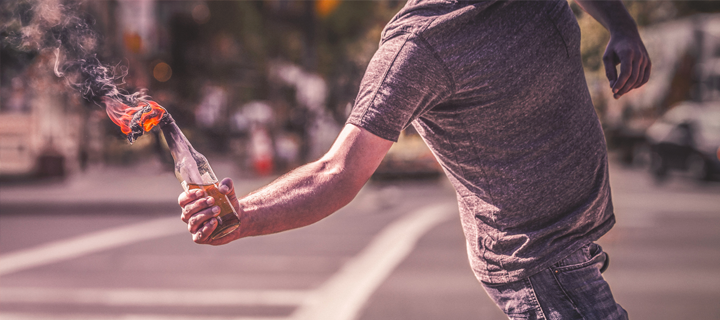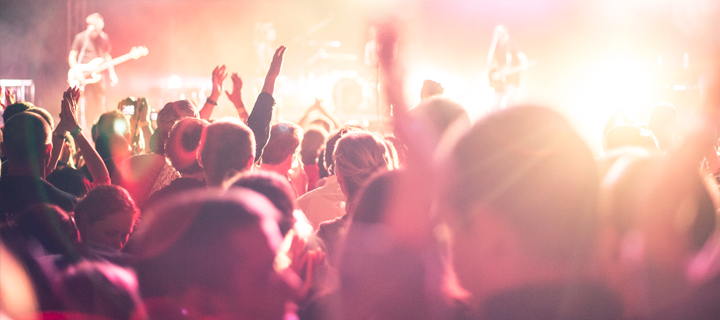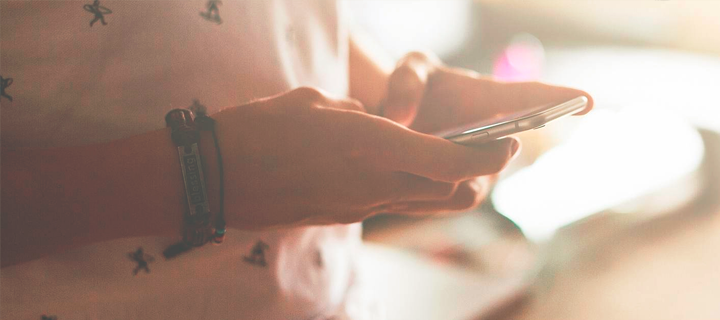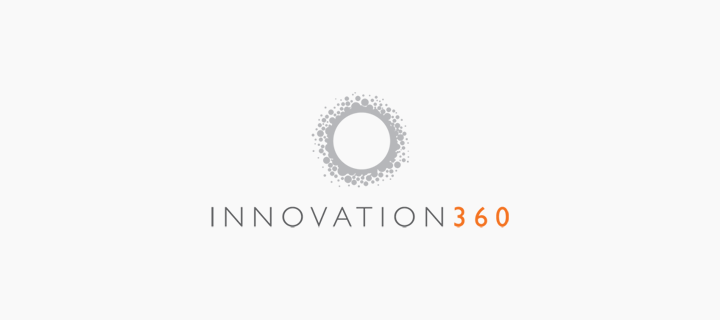Strategies for Coping in a Climate of Fear
In the wake of the horrific attacks in Brussels,it’s easy to feel overwhelmed by sadness — and fear.
These are times that we’ve never seen on such a global level, and that’s part of the challenge with coping—we’re in uncharted territory. There are countries that have lived with the daily reality of terrorism and violence for decades or longer. But for many parts of Europe and especially for us in America, this is something relatively new that we’re learning to live with. The other challenge is that when a terrorist attack happens, we have an overabundance of information and images at our fingertips.
The two mistakes we don’t want to make are looking for something terrible to happen everywhere we go—or—acting as if those things will never happen. So how do we live with the in-between? How do we balance that tension and guard against irrational thoughts and fears in this new reality?
A few ways to cope:
Be responsible with information and limit how much we take in
24-hour news and social media expose us to an overload of information that can actually magnify an event in our minds. When something horrible happens, we almost immediately have access to graphic pictures, iPhone videos, eyewitness accounts and seemingly endless news stories. We see things up close in a way we never did before. So one of the things we have to do is manage how much of our mind and our time we occupy with it. It’s critical to limit how much we watch and take in, and guard against obsessively reading or reviewing coverage.
Be mindful of our thoughts
When a violent attack like yesterday’s or those in Paris or San Bernardino happens, it’s easy to slip into a mindset of fear and start looking for a threat around every corner. Because these events are so shocking, they strike us at an emotional level. So we have to step back and let our rational thoughts mix in with our emotional thoughts to have a realistic perspective on our safety and the probability of danger. Think about getting on a plane soon after reading news of a plane crash. We all know that statistically, flying is much safer than driving around our own neighborhood, but at an emotional level our thoughts can get the better of us.
Be aware of what is driving our choices
When we find ourselves limiting our activities and what we do and where we go because of fears, we need to check those things out. Without pausing to examine the reasoning behind our choices, we risk making our world so small that we are missing out on life. It’s the same as not getting on an airplane because sometimes airplanes do crash. If we continue to let fear make our world smaller and smaller, we’ve allowed our thoughts to irrationally affect how we move about and how we live (exactly what terrorists hope we’ll do).
I’m not saying we should be reckless and careless. But we shouldn’t swing the other way and think we live in a world where there is no safe harbor. Because the reality is that terror attacks, plane crashes and other horrible tragedies simply don’t happen as often as we might think. And it’s our thoughts and our conscious choices that can help us navigate this uncharted territory without the burden of fear.
If you try these strategies and are still feeling overwhelmed by fear or are experiencing obsessive thoughts, we encourage you to reach out to us or another professional.
Staying Clean at Concerts & Music Festivals
As the spring season approaches and music festivals like South by Southwest ramp up, many like myself are getting the itch to experience live music. The fact that so many festival and concert goers drink and do drugs make attending such gatherings especially difficult for those of us who’ve struggled with addiction and are in recovery.
Due to live music being something we previously associated with drinking and drugging, attending concerts and music festivals can be challenging experiences that place our sobriety at risk. But for those in recovery who want to enjoy the experience of live music, the question is how to do so safely without putting our sobriety in jeopardy.
In my near 5 years of sobriety, I’ve had the chance of experiencing live music in different surroundings and have come up with a few guidelines on how to do so staying sober while still having fun.
My first and most important suggestion is to go to these events with like-minded friends who are also in recovery. I have found that I have a much better time, feel safer and more relaxed when I’m in the company of friends who are also sober.
There is a feeling of strength in numbers that comes with it. It makes a world of a difference to experience it all with a group who think like you and share a mutual understanding of and respect for sobriety. With this kind of support you are much more likely to not be pressured or coerced into doing something you don’t want to do. If you are going with people who drink or use drugs, you will want to make sure they have an understanding of your sobriety, are discrete about their personal use and are willing to keep it out of your sight.
Something you may want to look into before attending a concert or music festival is if there are any on-site recovery or 12 step meetings. A lot of music festivals unofficially host meetings throughout and just require a little bit of online research prior to find out where and when they meet. Some of the nation’s most popular music festivals are now featuring sober tents that are spots for water, shelter and a venue for recovery meetings. Finding and attending recovery meetings at music festivals provide a source of empowerment for staying clean, an oasis in a party atmosphere and an avenue for meeting like-minded friends.
I’ve come to believe that it’s about staying in the right mindset while enjoying the music. Recovery meetings during concerts and festivals can give you the boost you may need to stay in the right mindset. If you are having trouble finding meetings at the music event, you can look online for a list of recovery meetings to attend in cities nearby before or after the festival.
My next suggestion would be to keep physical distance from those you see who are visibly under the influence of drugs. I would suggest a 10-foot distance from anyone who is visibly impaired. That buffer will make you feel safer and it’s less likely for those under the influence to invade your personal space or interact with you in an uncomfortable fashion. As a general rule of thumb, daylight hours at concerts and festivals are easier than nights when it comes to avoiding those heavily under the influence.
I’ve found that past midnight, you’ll often become more and more aware of your sobriety and the lack of others’. If you find yourself surrounded by people who under the influence of drugs and you can’t seem to get away from them no matter where you go, you may want to reconsider whether or not it’s time to leave.
Never accept anything to eat or drink that you have not personally purchased as drinks and foods can be laced with a variety of drugs. It’s also important to never leave what you’re eating or drinking out of your sight. It’s never worth risking.
If you do end up feeling uncomfortable or the desire to drink or use is heightened, you’ll want to formulate an exit strategy ahead of time. Whether its finding a safe place on the outskirts of the festival to cool off and call someone for support or deciding to take an Uber ride home, you should create a plan ahead of time, in the event things get overwhelming. When in doubt, leave and find a safe ride home.
Seeing live music is never worth risking your sobriety. Assessing yourself before attending such an event is also necessary. If you are newly sober or are feeling shaky in your sobriety, it is probably best you stay home and not subject yourself to such a scene until you have some time established sober and are free of the desire to drink or use.
Following these suggestions, I have a new found appreciation for seeing and experiencing live music. What I have found is that I still have fun and I actually remember what I experienced. I tend to spend a lot less, not end up in sketchy situations and best of all, when it’s all over, I don’t have a terrible hang over or come-down followed by a deep depression. I get to make it home safely, without risking arrest and I feel great the following days and weeks.
When I first got sober, I thought I would never be able to enjoy the experience of live music again. What I have found is quite the contrary. Experiencing music sober has allowed me to redefine myself and the way I have fun. If you are in recovery from drugs and alcohol and seeing live music is something you are passionate about, you can still partake and have fun, but please keep these suggestions in the forefront of your mind and remember the fun is not over just because you got sober!
Smartphones Why do we call these “smart” phones?
A new study published recently by the Governors Highway Safety Association shows a sharp increase in pedestrian traffic deaths, and cites walking while texting as a possible reason. Have we really come to this?
The latest research is just confirmation of our growing obsession with our devices. In 2014, pedestrians using their cell phones went to the emergency room with related injuries more than 2,500 times, up from under 250 in 2006. Smartphones and similar devices are now blamed for 10% of pedestrian injuries, and even about six deaths per year.
Numerous studies have demonstrated just how oblivious we can become while using our devices. A National Geographic experiment proved that many device-focused folks on the street would stroll right past a guy in a gorilla suit without even knowing he was there. And there was even a (very lucky) fella a few years back who almost walked straight into a wild bear because he was too busy texting. Yup, that really happened.
And while death or injury by device is legitimately scary, there’s an equally alarming but more insidious toll that handheld technology may be taking on our relationships and mental health.Our collective obsession with being ‘connected’ could actually be serving to distance us from loved ones, and robbing us of the ability to just be in the moment once in a while.
When counseling couples, we often hear about a husband and wife who end their day by checking email or playing a game on their smartphone in bed. Seems like no big deal, right? But it’s the little things in our relationships that can chip away at intimacy and connection like slow but powerful forces of nature. Before you know itthat solid land mass of your marriage has eroded into something unrecognizable.
For people prone to anxiety and depression, devices can become another way to isolate or fuel irrational fears. Anxiety is driven by ‘what if’ thinking. Sometimes all it takes to quell the demons of worry and fear (whether or not you realize they’re eating at you) is to be present in a moment. Breathe. Notice what’s around you, or who is across from you. That’s tough to do with your head buried in a phone.Will checking Twitter or Facebook for the 11th time today really do anything to change your mood or your frame of mind?Probably not.But actually calling a friend or taking a (phone-free) walk might.
I challenge you to try a few experiments with your cell phone in the coming days:
If you and your partner routinely forgo a goodnight kiss (or more) in favor of checking your social media accounts, pledge to ban devices from the bedroom for one week. Talk to each other (what a concept!). Even watching TV together is better than sinking into the smartphone silos we create without even realizing it.
Or the next time you find yourself tempted to turn to your phone while you’re walking down the street, don’t. Look around. Observe the sights and sounds of your environment. Make eye contact with another human being. Heck–you could even smile at a stranger! It will probably be more fun than whatever your phone could have offered in that moment. And, according to the recent study, it just might save your life.
Addicted to pornography? Ask yourself these questions.
I recently read an article about Terry Crews (read it here), former NFL player and herculean actor in the TV show Brooklyn Nine-Nine, the Old Spice commercials, and movies including The Expendables. He revealed to the public his struggle with pornography addiction. He shared that his obsession had devastating consequences in his life. It took up all of his time, objectified his view of other people, and alienated his wife and children.
As more celebrities and public figures begin to speak out about this issue, it confirms what we have seen in our office. A large number of men, and increasing numbers of women describing that their use of pornography or other problematic sexual behavior has severely impacted their life. They share it prevents them from meeting their responsibilities, gets in the way of their goals and what they value most in life. Some even report having lost their jobs and families because of the habit. Hollywood is getting into the mix as well. Movies with characters wrestling with out of control sexual behavior are being produced including Shame (2011) starring Michael Fassbender, Thanks for Sharing (2012) starring Mark Ruffalo and Gwyneth Paltrow, and Don Jon (2013) starring Joseph Gordon-Levitt.
Why is there becoming a greater increase in public awareness? Listen to these stats: There are 68 million pornographic search engine requests on a daily basis—that’s 25% of total requests made worldwide. There are 1.5 billion pornographic downloads per month (peer-to-peer)—that’s 35% of total downloads worldwide. 72 million worldwide Internet users visit adult sites per month. And, the average age of first exposure to pornography is 11 years old.* In addition, various risk factors can contribute to the development of pornography or sexual addiction, including a history of addiction and/or mental health issues in the family, abuse or early trauma experiences, and the development of other addictive behavior that might interact with or reinforce sexually compulsive behavior. Any or all of these factors can lead to compulsive behavior.
If you or someone you care about is struggling with pornography or sexual addiction, there is hope. Dr. Patrick Carnes and his team developed the PATHOS questionnaire to provide a brief and effective screening tool to properly determine whether a person would benefit from seeing a professional for sexual addiction assessment and treatment. Here is the simple set of questions that can help you assess whether to seek help.
- Preoccupation–Do you find yourself fantasizing, daydreaming, or ruminating about sexual images or experiences?
- Ashamed–Do you compartmentalize or hide some or all of your sexual behavior from others?
- Treatment–Have you ever sought help for sexual behavior you did not like?
- Hurt others–Has anyone been hurt emotionally, physically, or psychologically because of your sexual behavior?
- Out of control–Do you feel controlled by your sexual behavior?
- Sad–When you view pornography or engage in other sexual behaviors, do you feel depressed afterwards?
If you answered with a positive response to one of the questions above, that would indicate a need for additional assessment.Here at i360, we have trained professionals that can help with the issue of sexual addictionand/or any co-occurring mental health issues. There is hope for healing and restored relationships.
Written by Mitchell Isle, a Licensed Professional Counselor and Certified Sex Addiction Therapist.
*http://internet-filter-review.toptenreviews.com/internet-pornography-statistics.html
The politics of anxiety
Bored at the office today? Try this. Go over to your co-worker’s desk and (depending on their political slant) tell them you can hardly wait for Donald Trump to get his finger on “the button”; or suggest that Hillary Clinton is a victim of the system and never intended to delete classified emails on her personal server!
Yup. Nothing brings out the political Honey Badger in us like a presidential campaign. Especially this one. We’re worried about big problems – national debt, education, race relations, immigration and terrorism – so public anxiety is steadily climbing to its summit. (Just rummage through your Facebook feed and you’ll see what we’re talking about).
A recent Washington Post / ABC News poll backs us up on this. The poll reported that 69% of Americans were anxious about a Trump presidency. And on the flip side, 51% of Americans were anxious about Hillary Clinton becoming president.
But there’s a take away here. (By the way, I was just joking about starting a political debate with your co-worker). You see, on a macro scale, society’s anxiety that is bubbling up over the presidential campaign is similar to our personal struggles with anxiety. There are certain triggers (job, sickness, relationships) and causes (genetics, how you were raised) that lead to anxiety, which in turn lead to panic attacks, worry, an active mind, fatigue or even sweaty hands.
Fortunately, anxiety disorders can be highly treatable (unlike our political problems). We work every day with people to make it possible for them to move forward with daily life activities in a supportive and encouraging environment. If you feel like you’re struggling with anxiety, we can help. Sit down with one of our trained professionals and start identifying the underlying cause or triggers that lead to your anxiety. And oh yeah, we promise not to bring up politics…
Even celebrities can be vulnerable
In December I joined with 11.2 million other people who watched Adele Live in New York City. Jimmy Fallon introduced her as a “once in a generation artist.” She belted songs from her former and most recent albums with such power and sincerity that I had tears welling up more than once. She got a standing ovation for When We Were Young, and then, she surprised me.
This woman: the voice of a generation, the one who can capture the attention of millions and whose album has stayed at the top of the iTunes charts since its release, she started to cry and thank the audience for welcoming her back.
She expressed her worry about being gone for so long and how she wasn’t sure about the response she’d get. She was overwhelmed by the acceptance this standing ovation communicated. Her worry had lied to her, seemingly made her doubt her abilities.
How often do you worry or feel anxious? How often do you look at others and only see confidence? Do you compare yourself? My guess is that this happens from time to time, and that’s why Adele’s crying moment was so surprising to me.
I tend to get caught in those comparisons too, thinking that if someone appears confident/successful/famous (fill in the blank), they must not struggle with anxiety. I start thinking that I’m different in the way I struggle.
The truth is that we all have times when worry gets out of hand; we get anxious. We all feel fear and wrestle with the questions of whether we’ll be accepted. It’s one of the needs we long to have met as humans – to belong. If you’re resonating as you read this, why not take a moment to consider how often you compare yourself.
If you’re spending more time on comparison than acceptance, worry might be dominating your life, and if that’s the case, we can help. Come talk, come play, come practice what it’s like to let that comparison go and to instead accept your feelings, knowing that most likely, they’ll change in another hour or two. And if you need something to do in the meantime, watch Adele sing and show us what it’s like to be vulnerable.




